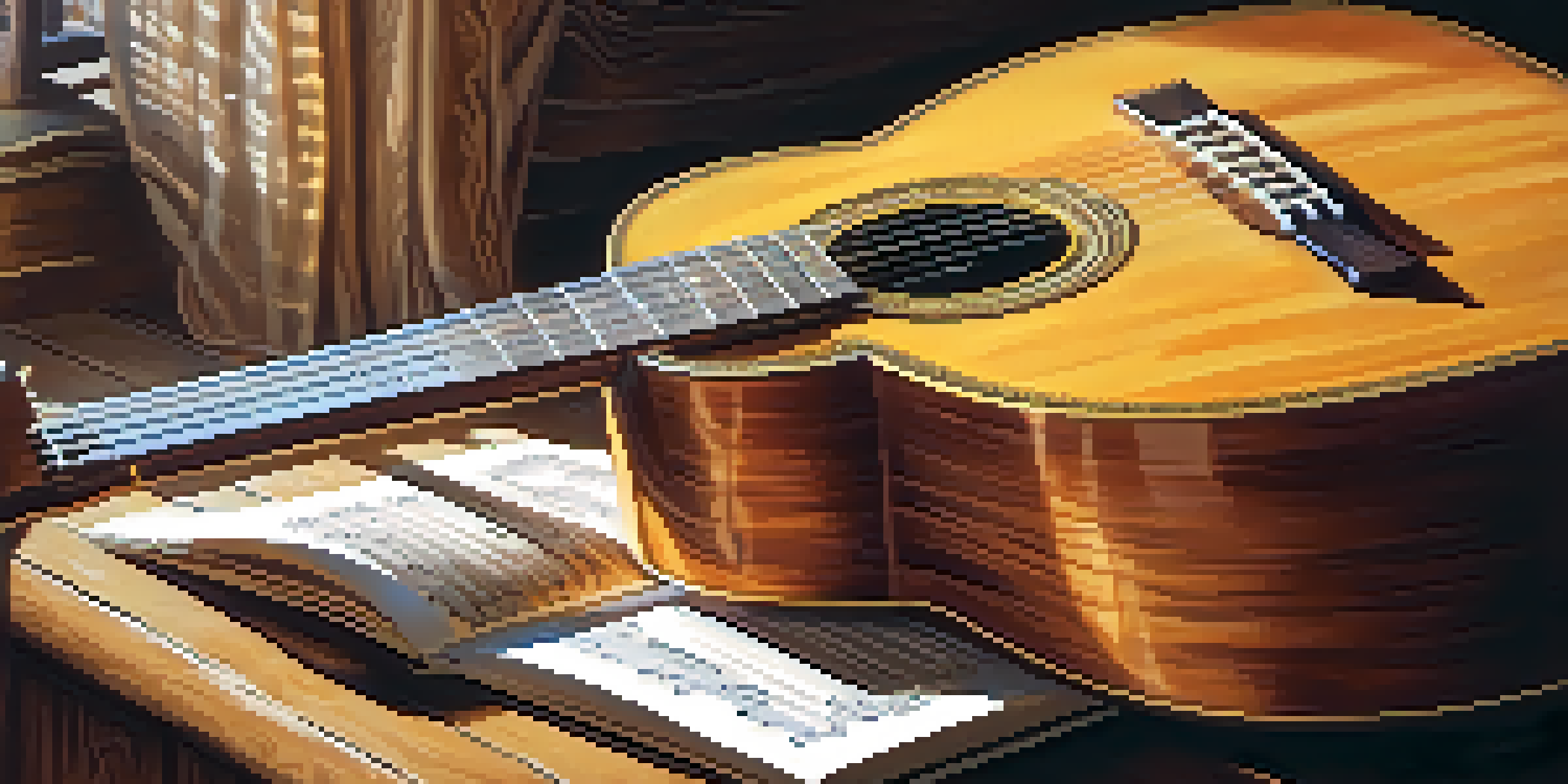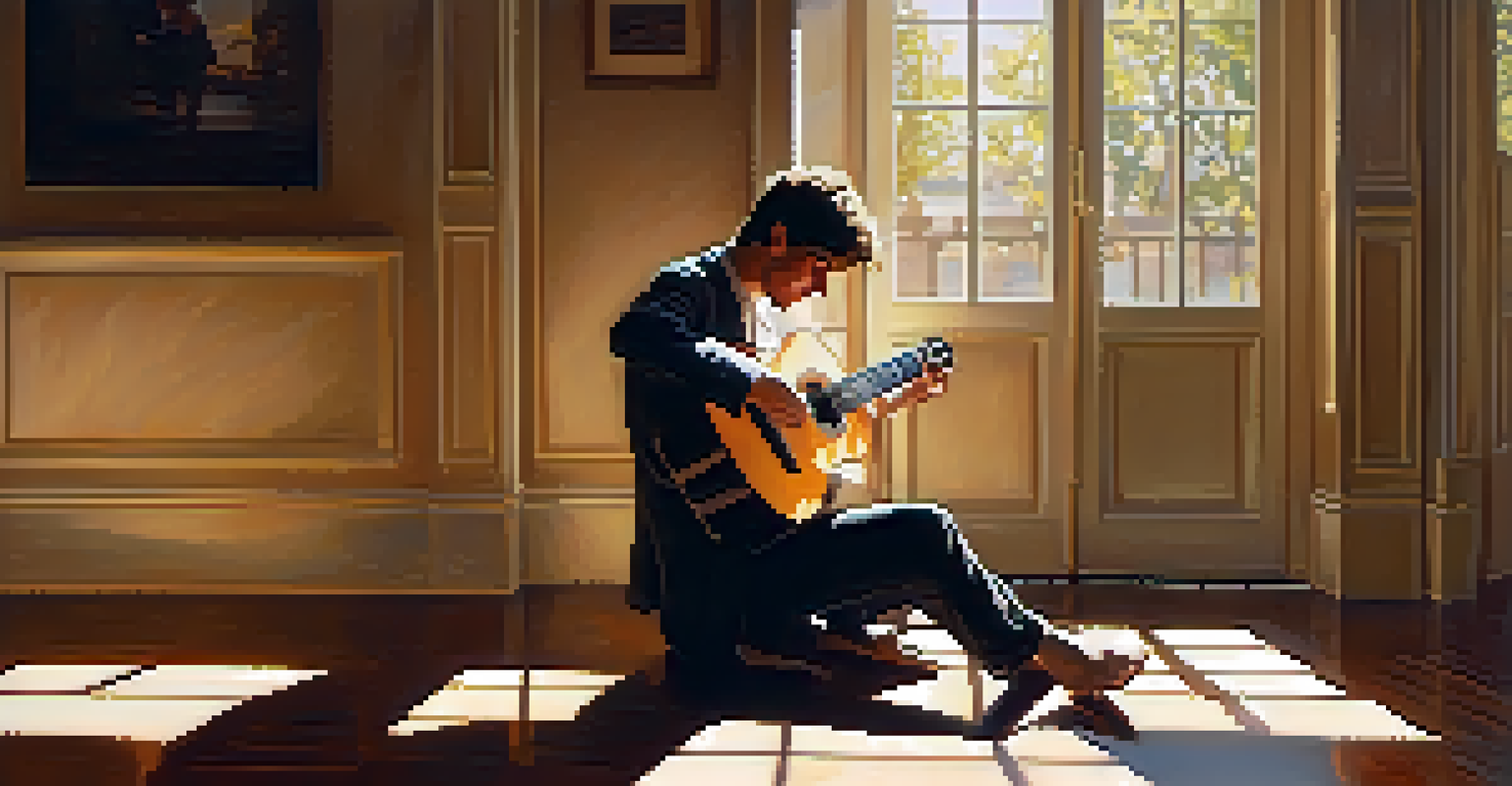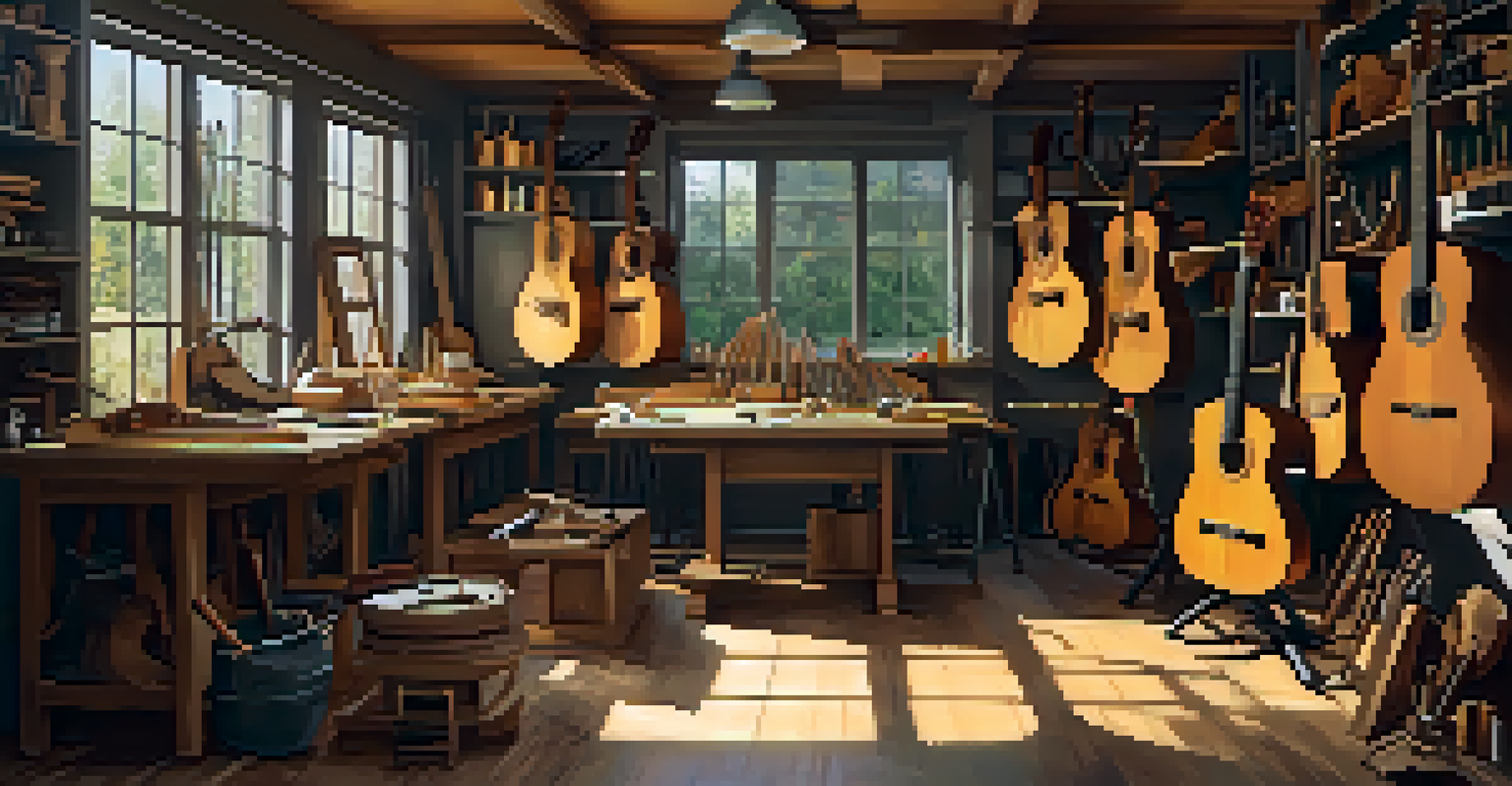An Introduction to Classical Guitar Techniques and Styles

Understanding the Classical Guitar: An Overview
Classical guitars are distinct for their nylon strings and wider necks, offering a unique sound and playability. Unlike acoustic or electric guitars, classical guitars are specifically designed for fingerstyle playing, making them ideal for a variety of musical styles. This type of guitar has a rich history, rooted in Spanish traditions, and has evolved into a popular choice among musicians worldwide.
The guitar is a miniature orchestra in itself.
The body shape and construction of a classical guitar significantly affect its tone and volume. Luthiers often use different types of wood, such as cedar or spruce for the top, which contributes to the instrument's character. Understanding your guitar's anatomy is essential, as it helps you appreciate how each component influences your sound.
As you embark on your classical guitar journey, it's crucial to choose an instrument that feels comfortable. Whether you're a beginner or transitioning from another guitar style, finding the right classical guitar will enhance your learning experience and inspire you to explore various techniques.
Essential Techniques: Fingerstyle Fundamentals
Fingerstyle is the hallmark of classical guitar playing, emphasizing the use of individual fingers rather than a pick. This technique allows for greater expressiveness and dynamic control, enabling players to create intricate melodies and harmonies. With practice, fingerstyle can become second nature, opening up a world of musical possibilities.

One of the foundational fingerstyle techniques is known as 'apoyando' or rest stroke, where the finger strikes the string and rests on the next string. This technique produces a strong, clear sound, making it ideal for melodic passages. As you master apoyando, you can explore other fingerstyle techniques, such as 'tirando' or free stroke, which offers a lighter touch.
Classical Guitar Basics
Classical guitars, with their nylon strings and wider necks, are uniquely tailored for fingerstyle playing and have a rich historical background.
Practicing scales and simple pieces using these techniques is a great way to develop your finger coordination and strength. Start slowly and focus on accuracy before gradually increasing your speed. Over time, you'll notice improvements in your control and the overall quality of your sound.
Exploring Different Classical Guitar Styles
Classical guitar encompasses a variety of styles, each with its own unique characteristics and historical context. From the intricate flamenco rhythms to the serene melodies of classical music, these styles offer diverse opportunities for expression. Understanding these different styles will help you discover your musical preferences and expand your repertoire.
Music is the shorthand of emotion.
Flamenco, for instance, is a passionate Spanish style characterized by fast tempos and percussive techniques. It incorporates distinctive strumming patterns and rapid finger movements, making it an exciting genre to learn. By immersing yourself in flamenco, you can experience the energy and emotion that define this vibrant musical form.
On the other hand, traditional classical music often emphasizes elegance and precision, with composers like Bach and Sor leading the way. Learning pieces from these composers can improve your technical skills and deepen your appreciation for the art of classical guitar. As you explore these styles, you’ll find that each one presents its own challenges and rewards.
The Importance of Proper Posture and Hand Position
Proper posture and hand position are critical for both comfort and technique on the classical guitar. Keeping your back straight and shoulders relaxed not only enhances your playing but also prevents injury over time. Developing good habits early on will set you up for a successful learning journey.
Positioning the guitar correctly is equally important; it should rest on your left leg, while your right leg is elevated by a footstool. This setup allows for better access to the fingerboard and promotes fluid movement. Your left hand should curve naturally over the neck, with fingers hovering above the strings to facilitate smooth transitions between notes.
Essential Techniques: Fingerstyle
Mastering fingerstyle techniques like 'apoyando' and 'tirando' is crucial for creating expressive melodies on the classical guitar.
As you practice, regularly assess your posture and hand position. Taking the time to adjust these elements can greatly improve your playing efficiency and sound quality. Remember, small changes can lead to significant improvements in your overall technique.
Practice Strategies: Building Your Skills Effectively
Effective practice is essential for mastering classical guitar techniques. Setting clear goals for each session helps you stay focused and motivated. Instead of simply playing through pieces, break your practice into manageable segments, dedicating time to specific techniques or songs.
Incorporating a variety of exercises is also beneficial. For instance, alternate between scales, arpeggios, and pieces to keep your practice sessions engaging. This diversity not only strengthens different aspects of your playing but also prevents burnout, allowing for sustained progress.
Moreover, don’t forget the importance of patience and consistency. Progress may sometimes feel slow, but regular practice will yield results over time. Celebrate small victories along the way, and remember that every note you play brings you closer to your musical goals.
Listening and Learning: The Role of Ear Training
Listening is a crucial part of learning any instrument, including the classical guitar. By actively engaging with recordings of professional players, you can develop a better sense of timing, phrasing, and dynamics. This exposure will not only inspire you but also help you to internalize different musical styles.
Ear training exercises can further enhance your musicality. Simple activities like identifying intervals or transcribing melodies can sharpen your listening skills, making it easier to replicate what you hear on your guitar. Even humming a melody before playing it can reinforce your understanding of the music.
Engaging with the Guitar Community
Joining a community of classical guitarists enhances your learning experience through collaboration, feedback, and shared passion.
Ultimately, blending listening and playing creates a well-rounded musical experience. As you become more attuned to the nuances of classical guitar music, you'll find that your playing reflects a deeper understanding of the art form itself.
Finding Your Community: Engaging with Other Musicians
Joining a community of classical guitarists can significantly enrich your learning experience. Whether it's through local classes, online forums, or social media groups, connecting with others who share your passion can provide valuable support and motivation. These interactions can also expose you to new techniques and styles.
Participating in group classes or workshops offers a unique opportunity to learn from peers and instructors alike. You can receive constructive feedback on your playing, which is crucial for improvement. Moreover, collaborating with other musicians can inspire creativity and expand your musical horizons.

Don’t hesitate to attend concerts or performances as well. Watching seasoned players can ignite your passion and provide insight into different playing styles and techniques. Ultimately, surrounding yourself with a supportive community will keep you engaged and motivated on your classical guitar journey.